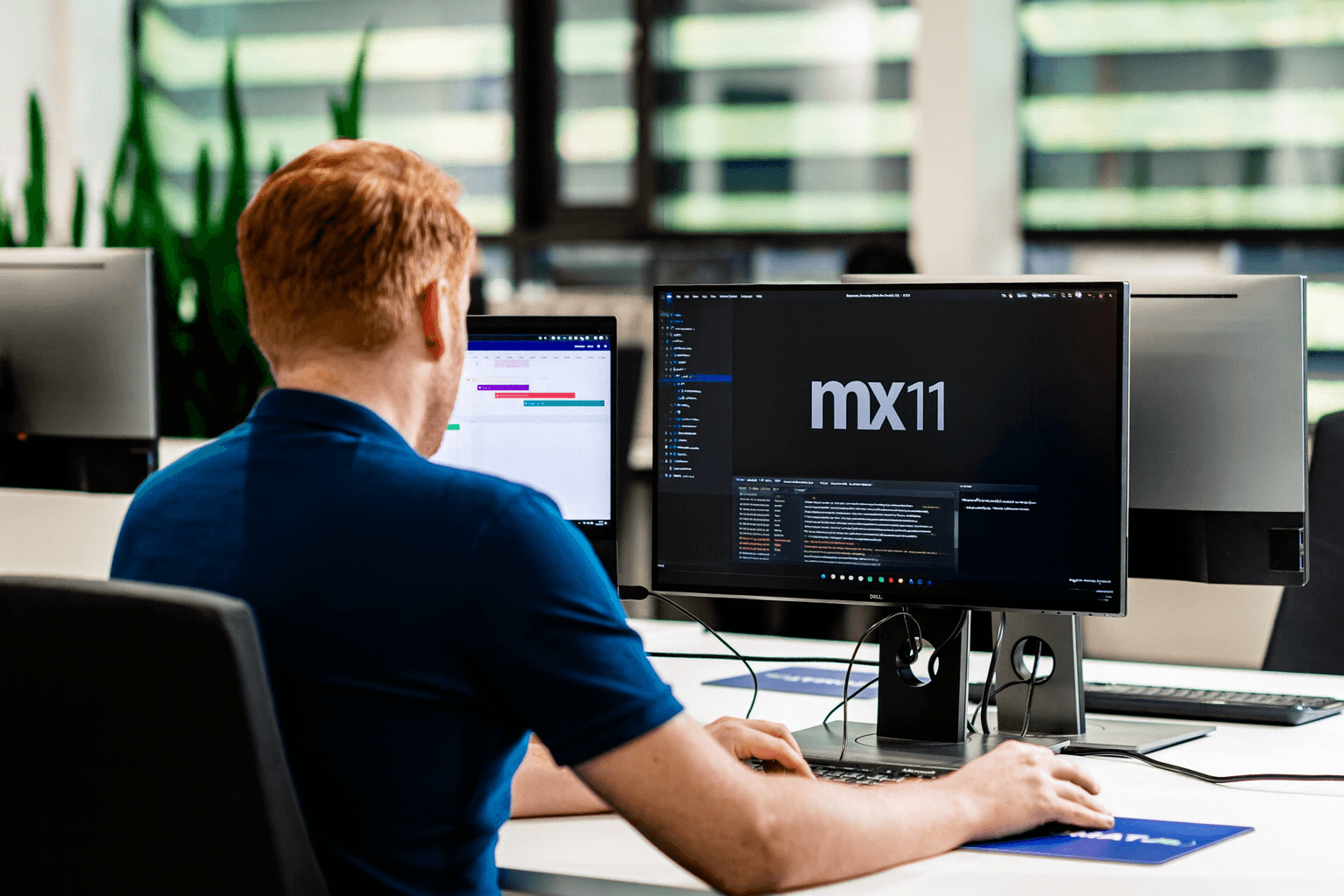Mendix 11: a new chapter in the future of low-code
29 October 2025 • Blog

Insights from Mendix MVP Bart Poelmans
Mendix 11 marks a new era in which AI is no longer an add-on, but the engine behind software development. For organizations building with low-code, it opens the door to even faster innovation and smarter automation.
At Ciphix, Mendix Platinum Partner and Certified Delivery Excellence Partner, we have been building solutions on this platform for years and closely follow every step of its development.
On behalf of Ciphix, we spoke to Bart Poelmans, Mendix MVP and active with the platform for 15 years, about the biggest innovations and what they mean for organizations.
“I’m happy with what I see,” says Bart. “Mendix 11 has clearly caught up and is now completely ready for the next phase.”
What makes Mendix 11 different from previous versions?
The biggest change in Mendix 11 is that AI is deeply integrated into the platform, not as an isolated addition, but as part of the entire software development lifecycle.
AI supports development teams from initial idea to release. This allows organizations to respond faster to changing business needs without sacrificing quality or compliance. Product owners get help in creating backlogs, developers in modeling data, logic and screens.
In addition, the development pipeline has been further optimized so that teams can more easily work with continuous integration and continuous delivery (CICD); an important step toward faster and consistently deployed releases.
“Earlier you had to figure everything out yourself; now the platform actively thinks with you.” says Bart. “That makes development not only faster, but also smarter.”
Agentic AI: collaborating with smart agents
Also introduces Mendix 11 Agentic AI: agents that can perform tasks or support knowledge work independently within applications. A strong feature is that you can properly demarcate these agents with guardrails, keeping them functioning in a controlled and reliable manner. In addition, developers can decide which LLM (Large Language Model) an agent works, from ChatGPT to a local model.
“What I find strong about this,” says Bart, “is that Mendix does not choose for you. You keep control, but you do get all the freedom to experiment.”
These agents use MCP (Model Context Protocol), a secure standard that allows them to call logic from other systems or consume existing MCP servers. At the same time, a Mendix application can also act as an MCP server itself, allowing other AI agents to make use of the available functionality. This allows applications to work together smarter and more context-aware, without complex integrations.
“A person’s knowledge work is getting better and better to simulate,” says Bart. “But in a controlled way.”
Dynamic Case Management: getting a grip on complex processes
Another notable addition is Dynamic Case Management (DCM). Whereas until now Mendix mainly supported linear processes, this extension offers more flexibility for unpredictable or knowledge-intensive processes, such as in healthcare or government.
“Some processes are just too human to capture in ‘a straight line,'” says Bart. “Dynamic Case Management gives room for nuance – and that’s often exactly what you need.”
Mendix expands to the workplace
With the Workstation Client, Mendix extends its reach to the industrial shop floor. Apps with this not only run on desktop or mobile, but can also communicate with local resources and functions on machines and devices in production environments. As a result, Mendix bridges the gap between cloud and local, and the platform can be used even more broadly: from back office to operations.
“For industry customers, this is a game changer,” says Bart. “One platform that can connect the whole chain.”
Data and machine learning closer
Mendix 11 deepens integration with RapidMiner, the data-science platform Siemens previously acquired. This allows organizations to train machine learning models in RapidMiner and apply the outcomes directly to their Mendix applications. This enables processes to be driven by actual data instead of fixed rules; a step toward fully data-driven decision-making.
A solid foundation for smart innovation
In addition to these innovations, Mendix has further refined the platform itself with improved management, rights structures and security. Permissions and updates can now be managed centrally, making management easier and more secure.
“You notice that Mendix is building on a solid foundation and is now focusing on innovative transformation and intelligent automation through deep AI integration.” says Bart. “This is how they continue to strengthen their position as a low-code leader.”
What does Mendix 11 mean for organizations?
The impact of Mendix 11 is clear, according to Bart:
- More efficient development:
AI accelerates and supports every stage of software development. - Smarter processes:
Agentic AI and case management make knowledge work easier and more accurate. - Greater complexity, more potential:
opportunities are increasing, but require governance and knowledge.
“AI doesn’t make apps simpler, but it does make them smarter,” Bart concludes. “And with Mendix 11, we are at the beginning of a new generation of low-code solutions.”
With Mendix 11, low-code takes a big step toward AI-native development. For organizations, this means: innovating faster, working smarter and responding better to change. As a Mendix Platinum Partner, Ciphix helps companies deploy this technology for real impact: from intelligent process automation to data-driven applications.
Wondering what Mendix 11 can do for your organization? Contact our Mendix team or read more about our projects.
Related
We will help you further!
Replace outdated systems, digitize complex business processes and accelerate innovation.



